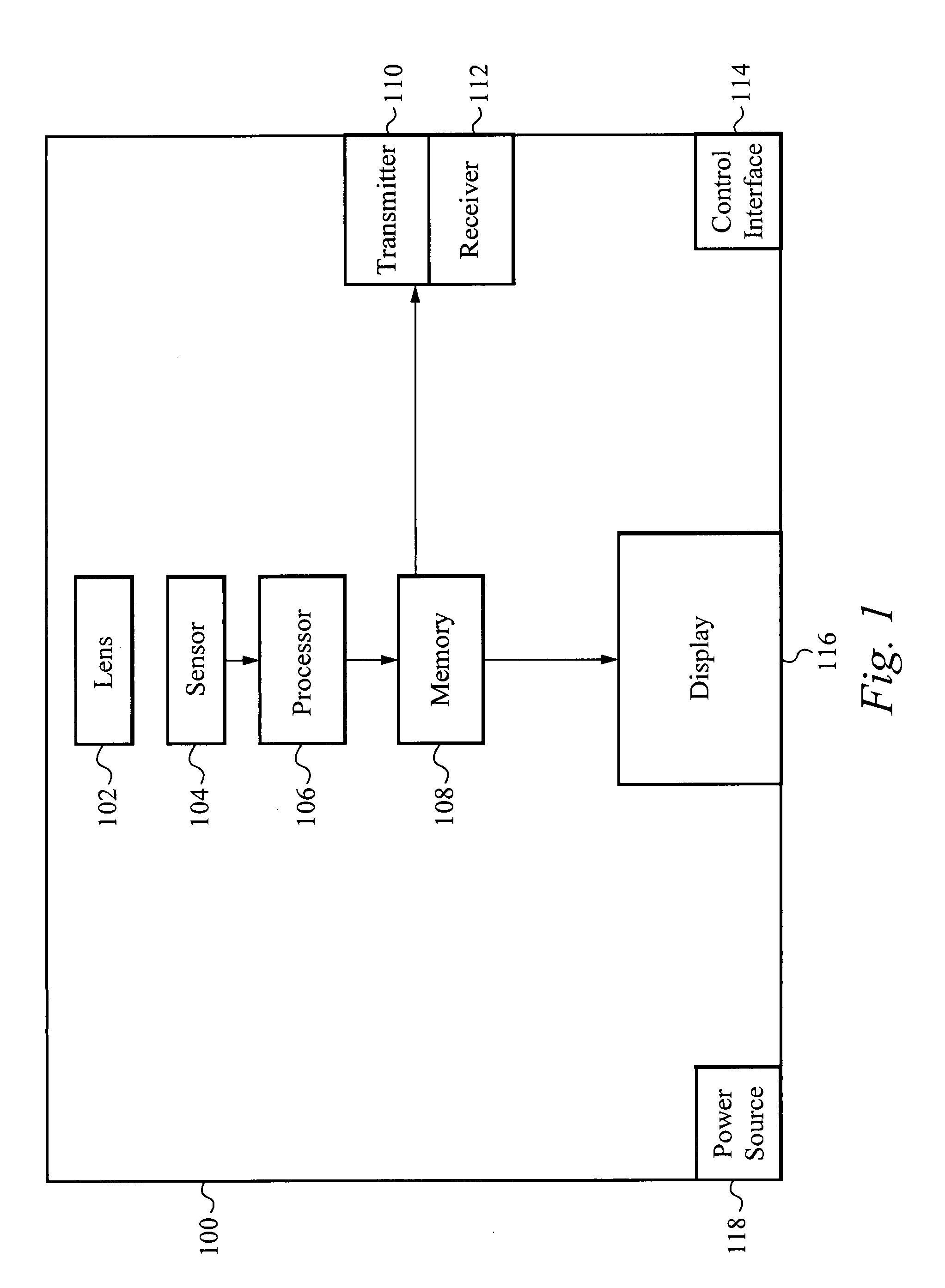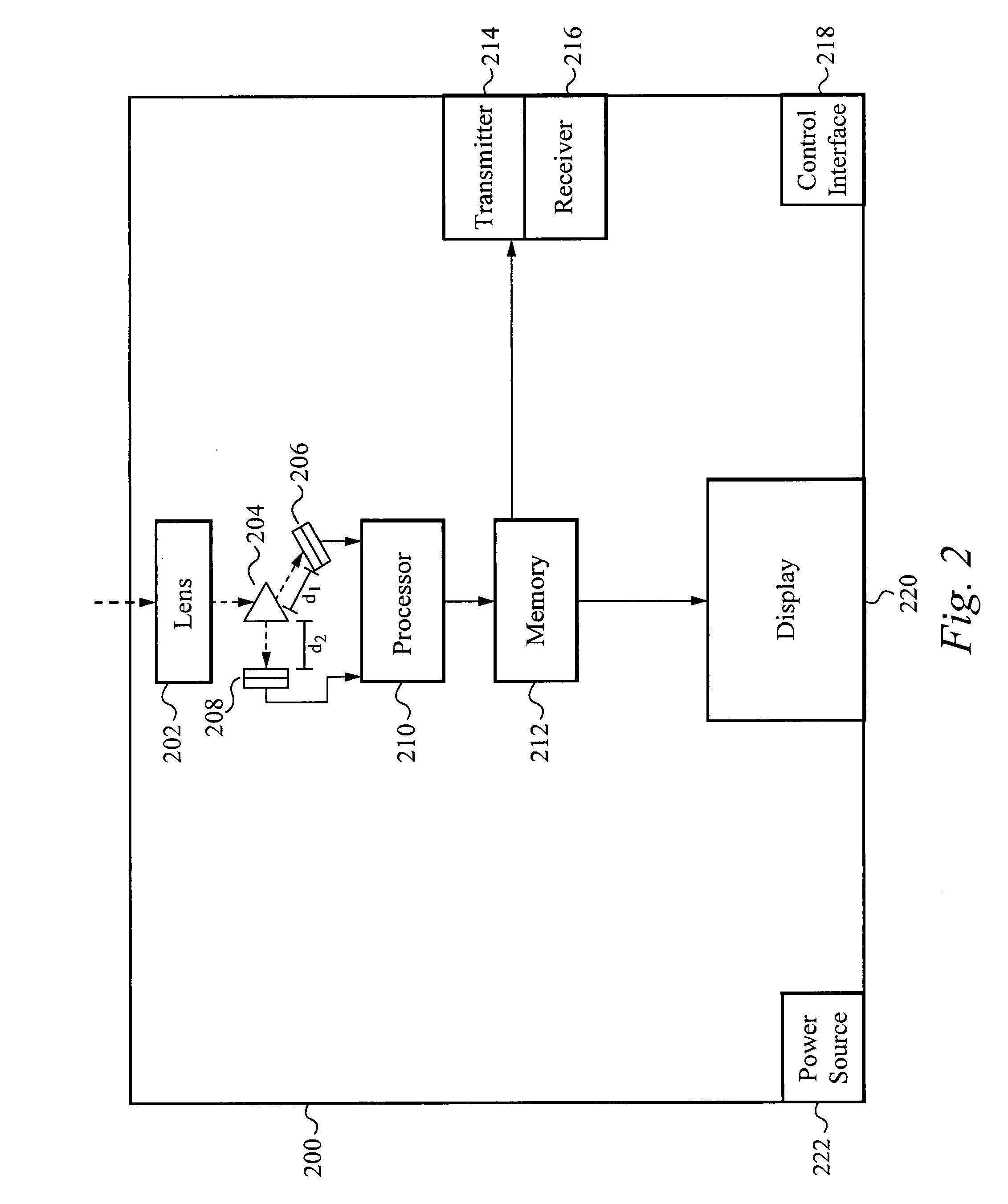Two dimensional/three dimensional digital information acquisition and display device
a digital information acquisition and display device technology, applied in image analysis, image enhancement, instruments, etc., can solve the problems of three-dimensional technology, he will lose the focus of image, and never been able to establish itself in the mainstream
- Summary
- Abstract
- Description
- Claims
- Application Information
AI Technical Summary
Benefits of technology
Problems solved by technology
Method used
Image
Examples
Embodiment Construction
[0030]A 2D / 3D acquisition and display device is described herein. The 2D / 3D acquisition and display device allows a user to capture 2D information and transform the 2D information into 3D information such as a 3D image. The 2D / 3D acquisition and display device is preferably implemented as a Digital Still Camera (DSC) or a digital camcorder.
[0031]FIG. 1 illustrates a block diagram of an embodiment of the 2D / 3D acquisition and display device 100. The 2D / 3D acquisition and display device 100 includes a number of components to ensure proper functionality of the device. A movable lens 102 and a sensor 104 are utilized in the process of acquiring 2D information. Although the lens 102 is described as movable herein, in some embodiments, the lens 102 and / or the sensor 104 are movable. The sensor 104 is able to be any digital imagery sensor such as a Charge Coupled Device (CCD) or CMOS imaging device. The movable lens 102 enables the capture of multiple 2D images at different depths, and the...
PUM
 Login to View More
Login to View More Abstract
Description
Claims
Application Information
 Login to View More
Login to View More - R&D
- Intellectual Property
- Life Sciences
- Materials
- Tech Scout
- Unparalleled Data Quality
- Higher Quality Content
- 60% Fewer Hallucinations
Browse by: Latest US Patents, China's latest patents, Technical Efficacy Thesaurus, Application Domain, Technology Topic, Popular Technical Reports.
© 2025 PatSnap. All rights reserved.Legal|Privacy policy|Modern Slavery Act Transparency Statement|Sitemap|About US| Contact US: help@patsnap.com



